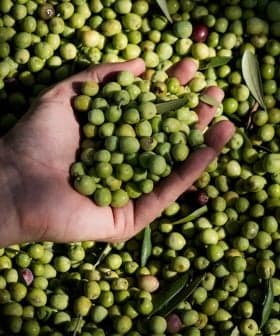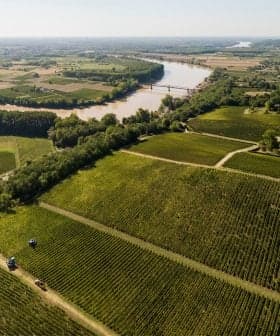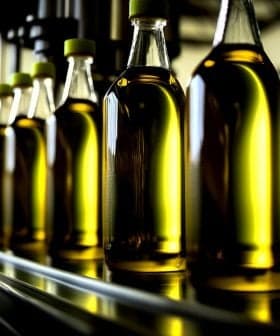Olive Oil Production in Italy to Exceed Original Estimates
The latest figures from Ismea, in collaboration with Unaprol, show Italy’s olive oil production is expected to exceed 300,000 tons this year.
 An olive grove in San Casciano in Val di Pesa, Florence
An olive grove in San Casciano in Val di Pesa, FlorenceItaly’s olive oil production for the 2019/20 season is forecasted to reach 321,000 tons, an 84 percent increase from the previous year, despite challenges like climate issues. Southern Italy saw growth in production, while central and northern regions experienced declines. Overall, world olive oil production is expected to exceed three million tons, with Spain seeing a 30 percent drop offset by increases in Italy, Greece, Tunisia, and Portugal.
Forecasts drawn up by the Institute of Services for the Agricultural and Food Market (Ismea), in collaboration with the national organization of olive oil producers, Unaprol, say Italy’s olive oil production in 2019/20 season could reach 321,000 tons, an increase of 84 percent compared to last year.
“The figure is slightly higher than the average of the last four years,” Ismea market analyst, Tiziana Sarnari, told Olive Oil Times. “We should however consider that during the previous campaign, as well as in 2016, the volumes produced by the Italian farmers were very low.”
Despite the climate issues, which have become increasingly frequent at a global level, production increased, within a framework which appears to be diametrically opposed to last year.
“Still, this year, despite the climate issues, which have become increasingly frequent at a global level, production increased, within a framework which appears to be diametrically opposed to last year, with a substantial growth in the south and a decline in the center and north,” she added.
Ismea highlights that this crop year many farmers first had to cope with a thermal shock, caused by excessive cold during flowering. This was followed by the sudden arrival of hot weather during setting, which, along with a hot and dry summer, caused considerable water stress on the trees. Finally, in the autumn, winds and thunderstorms slowed down the harvesting operations.
See Also:2019 Harvest NewsThe effects of the freezing weather of March 2018 also has played a part in determining this year’s yield.
In contrast, other zones benefited from seasonal rainfalls and favorable temperatures. This ensured a good flowering, which in turn led to an adequate pollination and, subsequently, a good fruit setting.
In most of southern Italy, ideal spring weather guaranteed proper vegetative development, which soon brought hope for an uptick in production.
Good signs of recovery have been seen in Puglia, which under ideal conditions accounts for half of the national production, but last year recorded a 65 percent drop as a consequence of severe frosts.
The province of Bari-Andria-Trani enjoyed a major increase in yields. In Salento, apart from the unproductive areas affected by Xylella fastidiosa, production from the healthy orchards is expected to be higher than last year, thanks to abundant spring rains, which guaranteed good development during the flowering and fruit setting phases.
Larger volumes also are expected in Calabria, especially from the groves located on the Ionian side of the province of Reggio Calabria and in the area of Cosenza. Catanzaro also enjoyed a good vegetative development, while a slight downturn compared with original estimates may be caused by some varieties heading into an off-year.
An abundant flowering in Sicily had led to high expectations among experts. However, the occurrence of unfavorable weather events during fruit setting will likely lead to a lower yield than expected. Still, high levels of quality are expected since pests did not cause any real damage to the fruit.
A similar situation occurred in Sardinia, especially in the southern part of the island, where a hot and dry summer, which hindered optimal vegetative growth, should not impact the upward trend.
Figures are also promising in Basilicata and Molise, in spite of less than ideal weather conditions during the warmer months.
In Campania, early-ripening varieties had some problems due to the heat during fruit setting, while others, such as Rotondella, enjoyed excellent results. In Abruzzo, increased production is also expected and will be boosted mainly by high yields from the province of Chieti.
In Lazio, a recovery is expected compared to last year, but the production may be below its potential level since many reform prunings have been carried out in the olive groves affected by the Burian (the Italian name for the Beast from the East) cold wave.
In the Marche region, many olive trees are also on the road to recovery after Burian. Additionally, low temperatures in the spring have caused delays in the flowering of varieties such as Leccino and Frantoio in some areas, where a moderate growth can be expected.
The picture changes in the central regions of Umbria and Tuscany, which will probably register a 30 percent drop compared to last year. The aforementioned issues are at the base of the strong decrease predicted by the experts in Liguria; Veneto; the whole Lake Garda area, which includes Lombardy and Trentino; and Friuli Venezia Giulia.
Only in Piedmont, the situation would presumably be unchanged compared with the last campaign.
“According to our estimates, based on data by the International Olive Council and the European Commission, the world olive oil production in 2019 will exceed the threshold of three million tons, which is, despite a small decline, still in line with the volumes produced last year,” Sarnari said.
“An estimated drop of 30 percent for Spain, should be therefore offset by the growth of Italy and other Mediterranean countries such as Greece, with a 62 percent increase, Tunisia, with more than double figures compared to last year, and Portugal, whose production should grow by 25 percent.”









